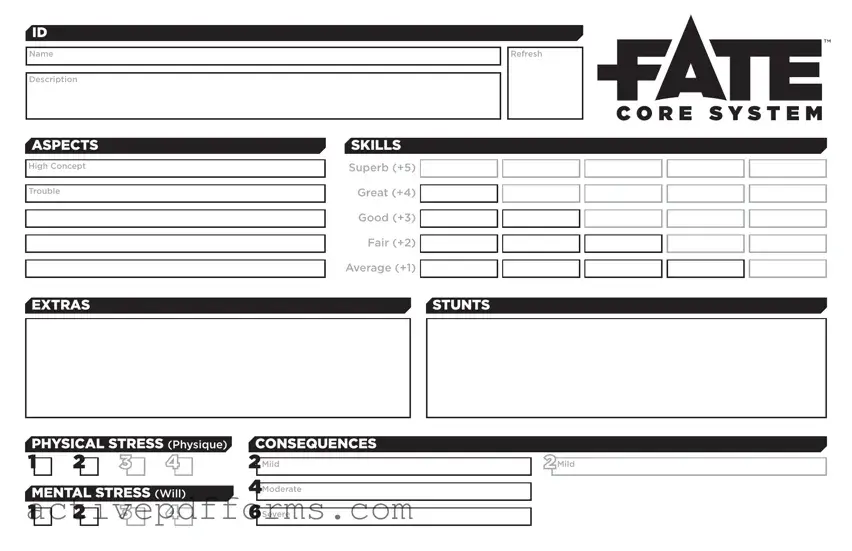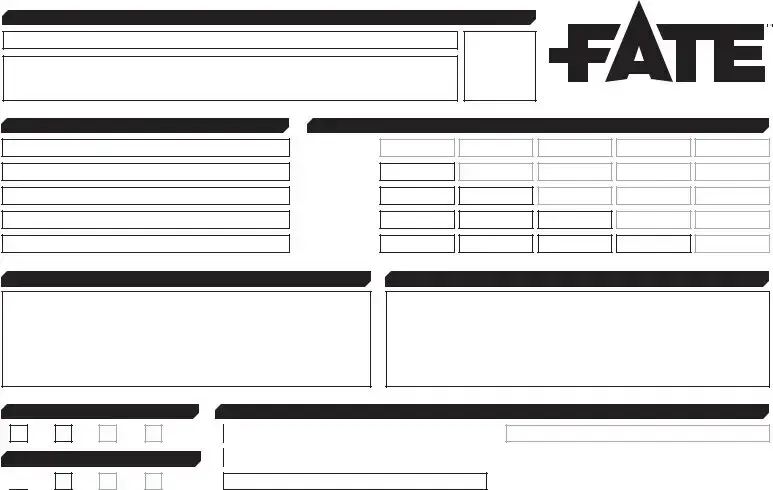Free Fate Character Sheet PDF Template
The Fate Character Sheet form is a tool designed for players to detail their characters in the Fate Role-Playing Game. It includes sections for outlining ASPECTS, such as the High Concept and Trouble that define the character's core motivations; SKILLS, which rank the character's abilities; and STUNTS, showing special capabilities. Additionally, it covers CORE SYSTEM elements like PHYSICAL and MENTAL STRESS, and CONSEQUENCES, enabling a comprehensive mapping of a character's strengths, weaknesses, and health.
Edit Fate Character Sheet Now



 2
2